Ancient Rome!!
Saturday, November 12, 2005

Recently, we have been learning a bit about the Romans by looking at this
kewl fold out cut out diorama from DK books.
I took some close up macros from the book and thought I would share them here, lots of action shots!
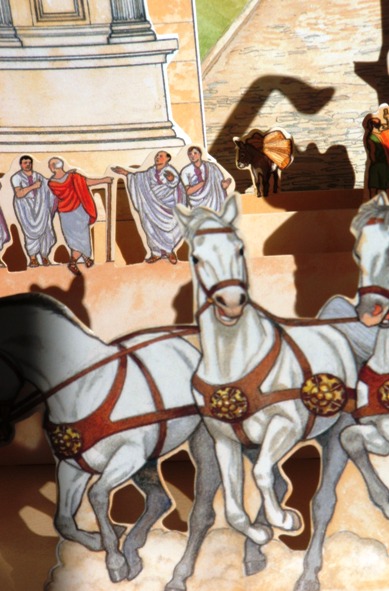
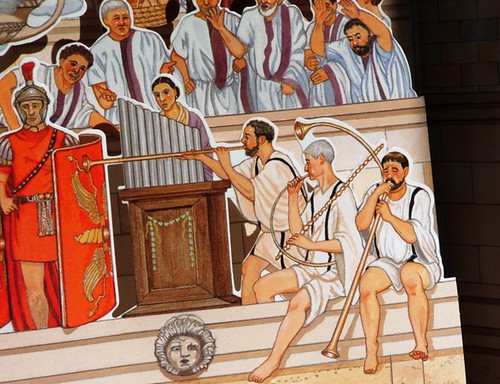
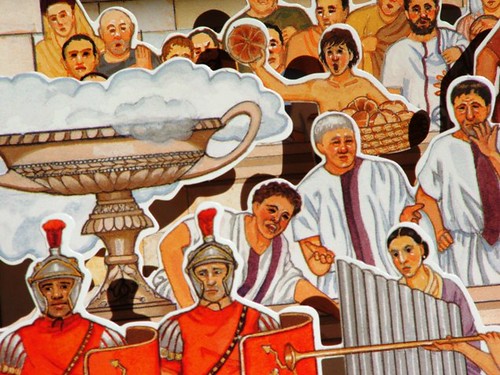
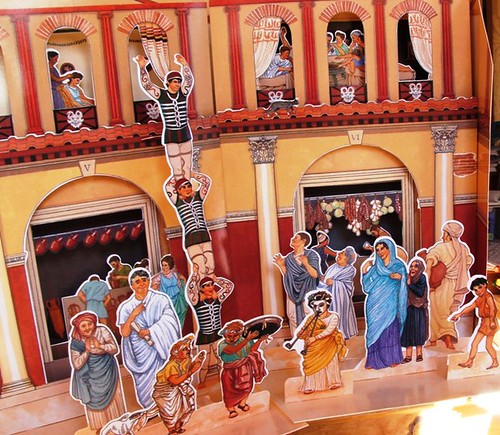
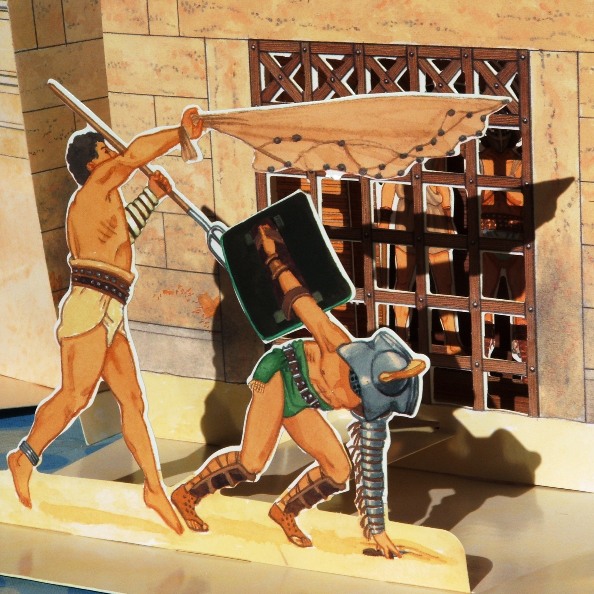
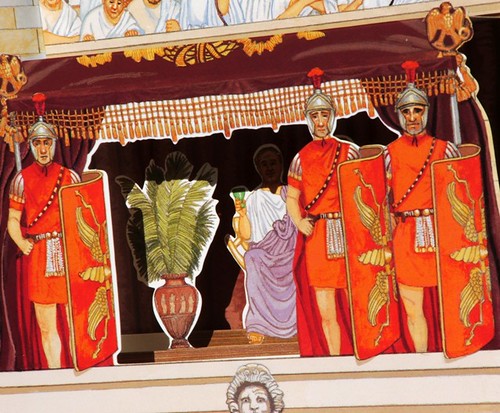


::
>
Learning about pH, Acids, Bases, measurements, fun.
Friday, November 11, 2005
Today, after practicing her cursive and some hiragana characters, Q and I opened up our second super-cheap science kit from Michaels Art Supply called "pH Fun!", by The Wild Goose Company.
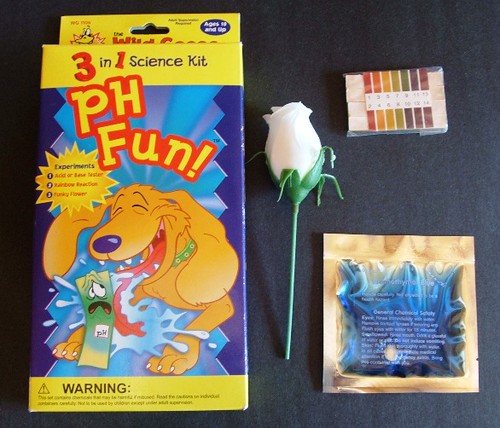
As you can see we have some bromphenol blue (pH indicator), a silk rose with another pH indicator in it's petals, some pH strips and a booklet of experiments.
First, I took Q to a web page to learn some scientific background on acids and bases. This site is good for a
graphical representation of the pH scale.
Then we visited this other amazing
site that has a flash animation that illustrates a pH meter and we messed around with various solutions and measured their pH. At this point we took a side trip into a discussion of Scientific notation and a 30,000 foot view of molarity so that she could understand what is going on with the pH meter.
Regarding scientific notation, here are a few sites and I found the following blurb
here:
Scientific Notation - A positive number is written in scientific notation if it is written in the form: a x 10 [superscript r] where 1 < a < 10 and r is an integer power of 10.
We also found
another site that helped us explore pH titrations with an animated buret and solutions.
With the end of these discussions, we went on to the fun stuff!
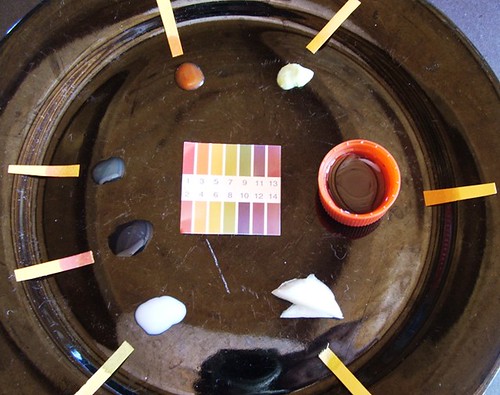
The first task was to test things around the house. We assembled a variety of fluids including (clockwise starting at 1 pm): Wasabi, ponzu sauce (citrus soy sauce), onion slices, milk, lemon juice, orange juce, buffalo wings hot sauce.
You can see the pH strips. The results were as follows: wasabi - 4, ponzu - 3, onion slice juice - 5, milk - 7, lemon juice - 3, orange juice - 4, hot sauce - 3.
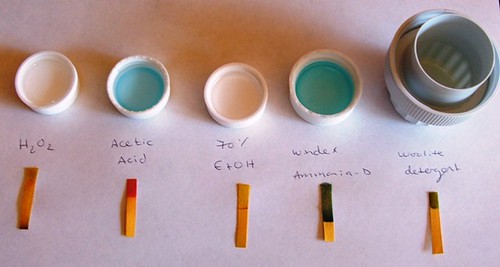
We also tested other materials and got the following results: Hydrogen Peroxide - 5, alcohol - 5, woolite detergent - 8, well water - 6, windex with ammonia-d - 10, acetic acid (vinegar) - 2.
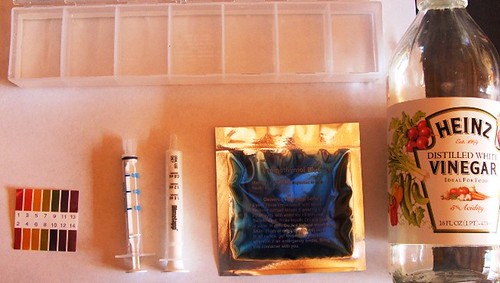
The next experiment was to titrate the pH of a solution of water and bromphenol blue (a pH indicator). Approximately equal amounts of water were aliquoted out, same amounts of bromphenol blue were added to them and then the experiment was to add acetic acid (AA) and see what happens.
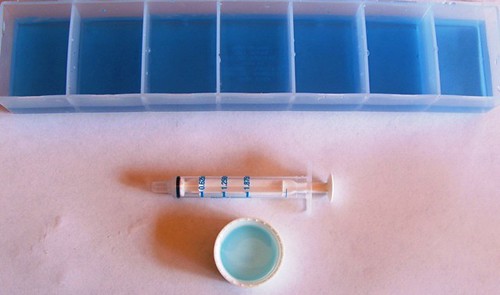
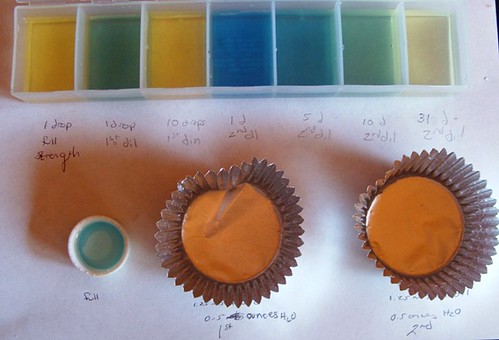
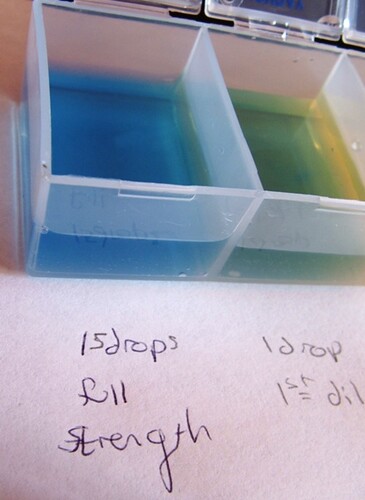
We made a digital movie of this part and it can be found
here. (Please let me know how this site works for you re: getting the move to play for you! Lke it? Didnt work? Looks good? Looks horrible?)
Next, we titrated the pH back in the other direction with ammonia!
See the digital video here.
We then experimented with the silk flower pH indicator experiment and
the video is here.
Here are a few resources/tutorials on pH and chemistry!
Chemistry Hypermedia Project which features comprehensive on-line course in general chemistry.
The Element Song This is a cute little ditty that is supposed to help students learn the names of the Chemiscal Elements. The lyrics are by Tom Lehrer
with
lyrics or
audio only file.
WebElements The periodic table on the WWW. Vastly updated. Mark Winters highly recommends this site. I have been there and for knowledge of the elements, there is no equal. A real five star rating. It has the latest developments on current new elements being synthesized. A must visit!!
LearnChem This site is chock-full of tutorials, practice problems (with solutions), quizzes, exams, and more!


::
>
The Amazon Goddess Cometh
Thursday, November 10, 2005
I love to see the Amazon boxes come in the mail :-) I know, its an expensive habit, but I prefer to own my books than to borrow. Borrowing from the library always twists my insides. I think about stern librarians and pissy staff members who give me judgemental looks. Only place I get worse treatment is at the dentist!.
ANYWAYS, back to the Amazon fetish.
This week, the Amazon Goddess brought us several books, including this amazing workbook "
Exploring the Shape of Space" by Jeffrey Weeks, an adjunct to his text "The Shape of Space". This workbook even comes with a CD ROM with further materials!
We also got a great source book for mathematics called "
Math on Call: A Mathematics Handbook"

One uses this book in the following ways:
* low key browsing (lots of nice but not irrelevant graphics)
* If stuck on a problem (how to approach a problem) parent or child can use this as a reference
* Child uses this as a reference to also build self-researching skills so that they do not feel that the parent is the only source of solution re: a block in some homeschooling activity!


::
>
Wired! Fun with electricity
Wednesday, November 09, 2005
We found a quickie science project at Michaels the other day called
"3 in 1 science kit - Wired" put out by the
Wild Goose Company.

This has a few alligator clips, a circuit board, copper wired, an LED light, and a battery connector.
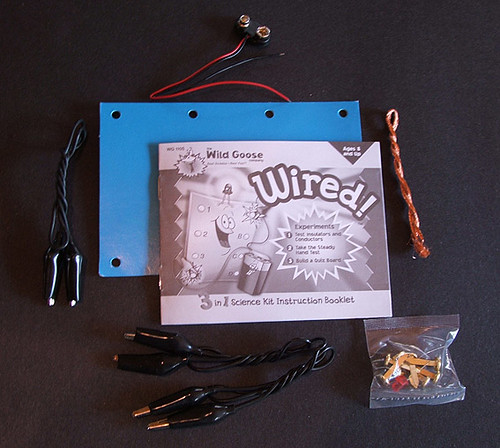
As suggested in the wired book, Q made a testing circuit with an LED light as indicator of a closed circuit. She then placed various test items in the testing loop and looked for whether the LED lit up or not. If it lit up then the test item conducted electricity!
Some of the things Q tested were:
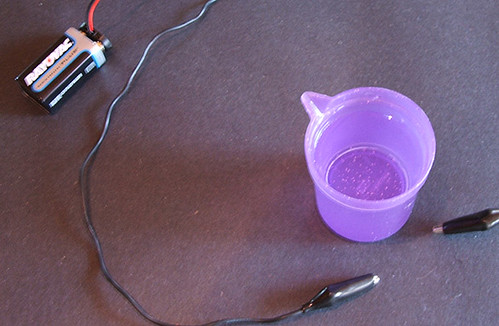
Well water (weak positive)
Salt water (strong positive)
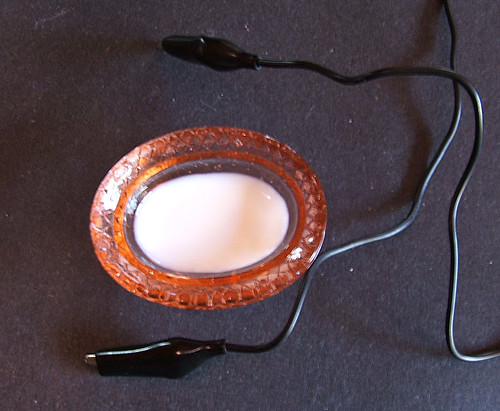
Milk (medium positive)
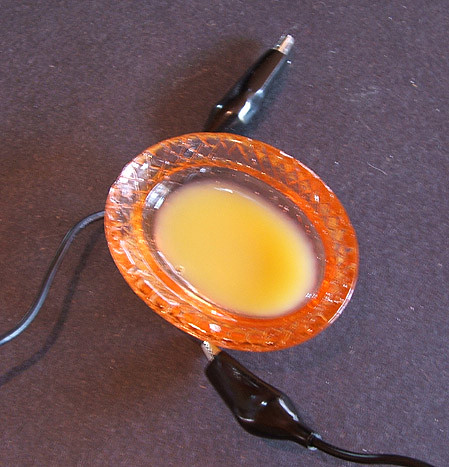
Orange Juice (VERY STRONG positive! Who could guess that huh?)
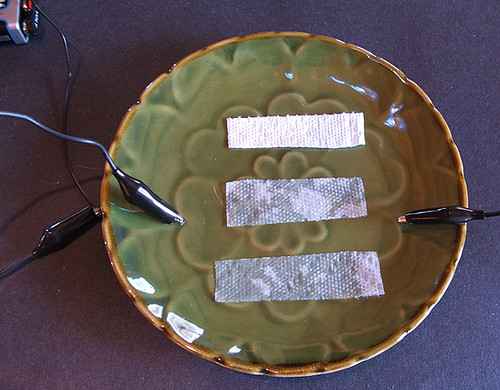
Test Paper strips with:
No water (no signal)
Well water soaked (middle strip, weak positive with leads very close to each other)
Salt water soaked (bottom strip, strong positive with leads very close to each other)
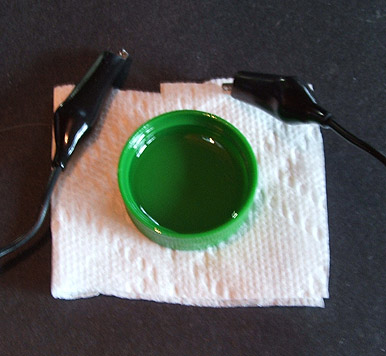
Oil (no light at all)
Ceramic (nothing)
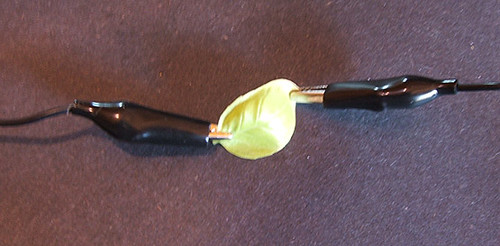
A basil leaf (extremely weak and very close to the other lead but definitely some current)
She tested a cast iron pan and was not able to get any light at all!
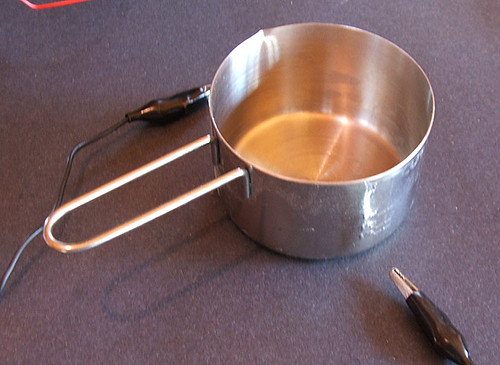
A stainless steel measuring cup (VERY STRONG!)
She tried dry salt and that was conductive too, even without liquid.
This was a super cool project! A lot for the $5.95 investment :-)


::
>
History Pockets

Today we are starting on a workbook I found at Barnes and Noble called "
History Pockets: Colonial America"
Its nice in that it has some good get-started directed exercises and will be nice as a run up to Thanksgiving. Am thinking about then taking Q to
Plimoth Plantation (Plymouth Rock on the coast of MA) to do the pilgrim re-enactment thang.

Check out this image, I think I want to be a part of this! Hmm.. Maybe we will dress up for this thanksgiving!

They have a great online section called "
You are the Historian" where you can explore this time period.

They also have this amazing "
Educator's Resource Pack" thats $15.04.
Other packs can be found
here.
Tell me if you have found other good unbiased interactive stuff on this theme (online or off) for the 4-8th grader range!)


::
>






























